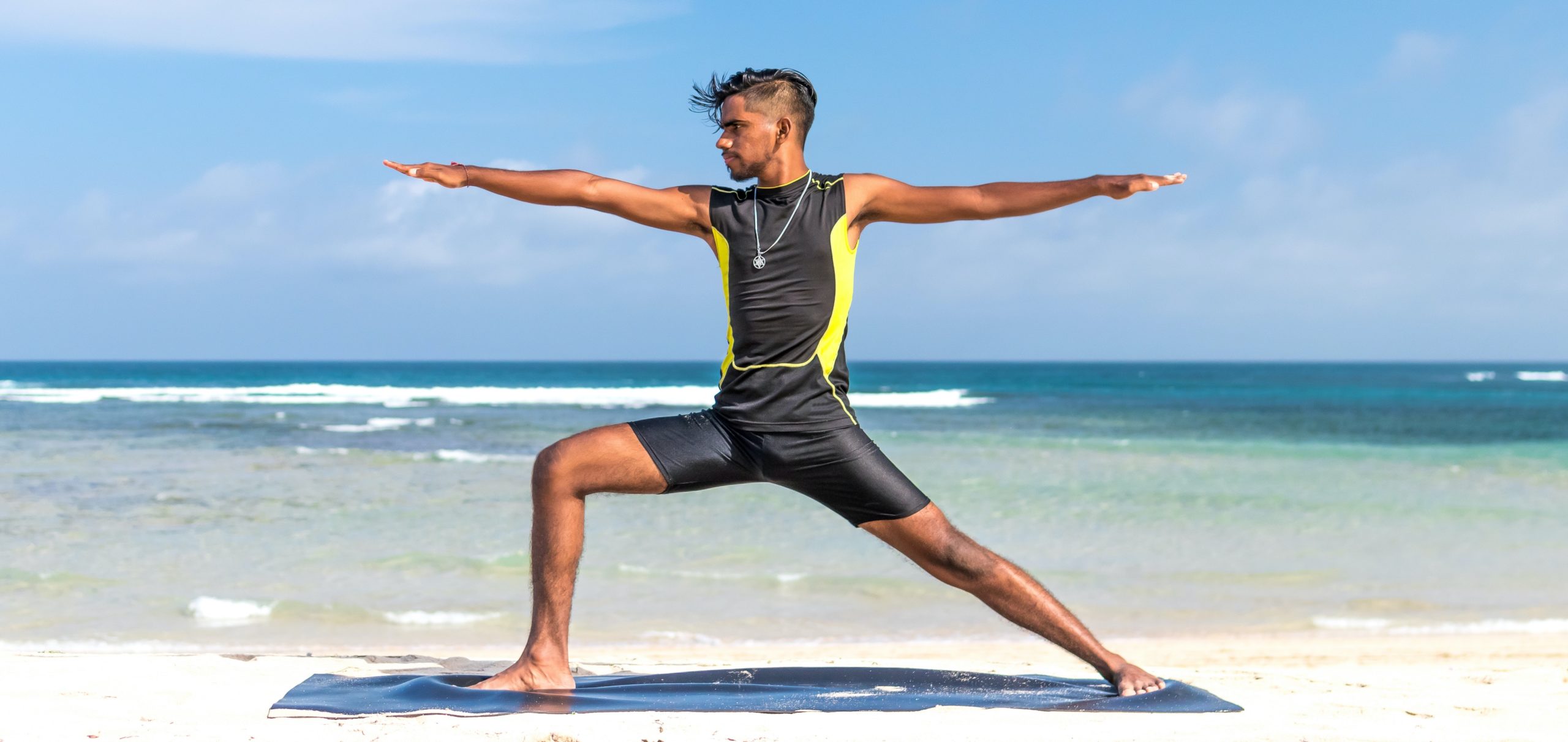“How can I become emotionally still?”
When seeking an answer to such a timely question, a more accurate question might need to be asked.
As the old adage says, “Answer the person, not the question.” Answering the person means addressing the emotions underpinning the question. This is important because it dictates the delivery so the person asking can truly receive the information.
THE ROLE YOU PLAY
As a Certified Transformational Nutrition Coach (CTNC), I educate my clients on Transformational Nutrition – physical, mental, and spiritual nutrition. And while I serve as the educator, it is important that I also help support my clients as they step into the role of the action taker.
In the case of finding emotional stillness, I can only provide you with information and a practical plan for you to implement the tools and make them your own.
Whether there is a global quarantine or an intense personal event that stimulates the sympathetic nervous system, there are tools to settle into the stillness within any emotion or feeling that arises.
That’s where you come in. It’s one thing to share knowledge. But it’s something else entirely for you to personalize it and take action on it. It is possible to be still within any emotion. So, let’s do it.
Better yet, let’s be it!
HOW TO ACHIEVE EMOTIONAL STILLNESS
There are countless informative books on stillness, creating the inner space between thoughts, how thoughts manifest as emotions, and what actions to take in order to be still.
But first things first, there are a few etymologies of the word still that really help describe what stillness truly is: to calm down, to become quiet.
In fact, the Hebrew word for “be still” is rooted in the word for “let go.”
The fact is, being still is an internal state of being and not something that is derived from your environment. It is possible to have feelings of agitation or ‘un-stillness’ in calm environments just as much as it is possible to be still in chaotic times.
Growing up, my brothers and I often felt restless, so my grandmother gifted us with a copper plaque that had the words, “Be Still and Know that I AM,” engraved on it. As I grew up, widened my perspectives, and began to practice stillness through meditation and other tools, the meaning and appreciation of the timeless message my grandmother passed to my brothers and I evolved tremendously.
The universal truth and continuous teaching to be still, comes from biblical words such as Psalms 46, “Be still, and know that I am God.” This refers to the mental stillness and awareness that transcends the thoughts that arise.
Once still and quiet, one can simply observe their thoughts, feelings, sensations, and emotions that arise without identifying with them. Not identifying with your thoughts requires an ability to concentrate and become aware of what arises in that moment.
For example, if I am still, I am not necessarily believing the next moment or the previous moments are more or less important than right now. There might be thoughts about the past or future that arise, but I am not entertaining or acting on those thoughts without a conscious decision to.
IDENTIFYING THOUGHTS AND FEELINGS OBJECTIVELY
A primary step in finding emotional stillness is to first identify your thoughts, feelings, and emotions in this moment. Written down, this might look something like the following:
As my fingers move across the keyboard, I experience a sense of calm and clarity. My legs are subtly twitching, and there is some heat on my lower back. There’s even a feeble tickle in my stomach. The thoughts I’m having are about how to accurately and simply share my understanding of stillness. Occasionally, I’m having thoughts that this could be over-explained; however, I will not choose to engage that thought so that I don’t begin to worry about what to write.
In the above journal entry, there were few personal emotional reactions to the thoughts and sensations that arose.
Sure, there were thoughts of uncertainty, but they are impersonal. Once the thought arose, I welcomed it in and then let it go, like looking up to the clouds that slowly pass in the sky.
Taking it personally would be to apply emotions to the thought like anxiety or frustration.
START ASKING BETTER QUESTIONS
In my first few thoughts, I mentioned that often arriving at an ideal answer requires a great question. Along with the information above about observing objectively, let’s transform the question, “How can I become emotionally still?”, into something that has a subtle hint that you don’t know how to find emotional stillness.
Your initial response to “How can I become emotionally still?“, might be “I don’t know.” To which I’d say you do know. You may just have some doubts that are trying to convince you otherwise.
One of the many beauties of the mind is that it is always in the now. What you focus on expands. If you read the question and became triggered to go down a thinking-feeling loop of uncertainty and doubt, it might have led you to much deeper emotional memories of when you felt uncertain.
This is another important reason to observe the feelings and emotions impersonally. You have to find something when it is lost, and with some of these rules of the mind mentioned above, we can agree that stillness is never lost. Rather, we are continuously arriving at a place of stillness.
Stillness is a practice, so continuous arrival acknowledges the everlasting and expanding journey of stillness. The journey of stillness, as with anything, ebbs and flows.
A question that evokes curiosity and excitement to improve the art of emotional stillness might be:
How do I continuously arrive at a place of stillness within any emotion or feeling?
Take note of the feelings that arise. The ‘better’ questions are impersonal and are focused on building the skill of stillness (which is exciting and evokes wonder), while the initial question – “How can I become emotionally still” – may evoke a feeling of uncertainty.
TOOLS AND TIPS FOR YOUR JOURNEY TO STILLNESS
Heed the note that stillness is a practice. This does not mean every moment is going to be pleasant. Stillness is the inner space above any wave that arises in your life. Rather than attempting to control anything that happens, one who is still rides the wave with a sense of trust and surrender.
Now that you have an idea of what stillness is, below are some tools to help you navigate any emotional waves that present themselves.
1. ALLOW YOUR MIND TO WANDER
Go on a walk or sit somewhere and allow your mind to wander. The action of mind wandering has been studied and researched to help lead to new ideas. It is well known that the greatest of minds, like Albert Einstein, would as he himself is quoted for saying, “…stop thinking, swim in silence, and the truth comes to me.”
The conscious mind is our creative and analytical mind; however, it can get in the way when it is too focused on a problem. When we let go, allow the mind to wander, and practice stillness, the decision to divert the focus allows the subconscious mind to step in and make connections greater than the conscious mind could imagine.
Walking has also been studied and shown to foster creativity and organize the world around us. As we move our bodies and change the things we see, it can change our perceptions about our thoughts.
If there’s a question on your mind that does not seem to have a solution, consider walking around, sitting outside, and allowing your mind to wander. Your focus can be on the environment around you, or it can be on your thoughts.
However, on the topic of stillness, love all that presents itself – anger, uncertainty, and unworthiness included. Creating the stillness within these emotions includes loving them and the information they bring you regardless.
2. MEDITATE
The number one tool to practice and create stillness is meditation. As mentioned earlier, stillness does not mean all will be pleasant. Stillness is the inner space within any emotion, like the eye of a storm is the calm at the center of the storm. Meditation means to become familiar with, so through the practice of meditation one can be more familiar with the emotions they experience and the information that arises.
The more you meditate, the more you will become aware of your own patterns.
Rather than reacting to your feelings of anxiety, fear, guilt, or any limiting fear-based emotion, you are sitting still with your eyes closed, guided or silent, focusing on your breath or sensations in your body.
Meditation improves stillness because the more you sit and inhibit the conditioned response of reacting unconsciously to limited emotions, the more you will increase your energy and can ride any wave in your life.
A few books I highly recommend looking into for help with meditating are…
- Dr. Joe Dispenza’s meditations
- Vishen Lakhiani’s meditations
- Ziva meditation by Emily Fletcher
- Headspace, Dr. Barry Morguelan
- Vipassana meditation
3. ASK LOFTY QUESTIONS
Another tool, that I became aware of through a course taught by Christie Marie Sheldon is to ask lofty questions.
Rather than run the loop of questions that hinder you, ask lofty questions that lift you into action. When the first type of questions are asked, the mind will answer with reasons that support the victim mindset.
A lofty question in the topic of stillness like, “How is it that I am so good at being still within my emotions?” will shift focus on how you answer.
In my experience of feeling stuck, I would ask something like, “How is it that I always know what to do?” to which I would settle down and naturally do something that supported me in solving the problem at hand. Sometimes It would take a few hours or days to realize that I had solved the problem because I was living as if I already had.
4. JOURNAL
Journaling can help organize and make sense of the thoughts and feelings. Throughout the day, there are over 60,000 thoughts that go through your head. In all likelihood, some may not be pleasant.
By taking them out of your head and writing them on paper, it allows you to capture the thought visually. Then, you can more clearly see that thought for what it is, meaning the emotion it is stemming from. A technique I highly recommend here is inserting Katie Byron’s 4 questions.
Gratitude journaling can build the skill of focusing on gratitude. By making an effort to choose to be grateful in any situation, you can also find stillness. It is possible to be grateful for a feeling of fear because it’s only there to show you something.
This is a practice of loving a part of yourself that you may not have loved before. Practicing this can help you become still and let go of trying to get rid of certain feelings and emotions.
5. BREATHE
There are also many breathing techniques (checkout Boundless by Ben Greenfield for some recommendations) that really boost the immune system, manage stress, enhance sleep, increase energy, and more.
I like to do box breathing as I take a cold shower. As Ben Greenfield writes in Boundless, this technique can really help “regulate the autonomic nervous system and calm you down.”
Often when our feelings and emotions are all over the place, the conscious brain begins over-analyzing and looking for reasons to justify our feelings.
Instead of asking something that is not productive, close your mouth, slowly inhale through your nose for four seconds, hold the breath for four seconds, exhale through your mouth for four seconds, then hold for another four seconds. Repeat this breathing exercise a few times. This simple technique can help you arrive at a still place when being still does not seem beneficial.
6. READ
Reading can also be a way to focus your attention on the moment. The words on the pages of a good book, especially a transformative one, can transcend you to a place you may not have been before; thus, transporting you beyond stressful feelings and emotions. When choosing a book to read, think less about the right one to read and more about which feels right in that moment.
7. LOOK AT PHOTOS & CREATE A VISION BOARD
There are studies that show just looking at pictures of nature can calm levels of stress. Take that a step further and create a vision board to help evoke calmness and peace.
SOME FINAL THOUGHTS
As you embark on your journey of emotional stillness, I’d like to encourage you with some important last words that really helped me create a sense of stillness, even when it seemed like it was impossible.
First things first, you can’t get this wrong.
Set an intention for something you’d like to experience. Create a detailed experience of how it will be once you solve whatever it is that you feel a struggle with, and focus on that.
Einstein said, “No problem can be solved by the same consciousness that created it,” so stop trying to solve the problem in the same state that it was created in.
Stillness is a journey and a place that transcends the still or raging waters. Navigate wisely and know this too shall pass.




+ show Comments
- Hide Comments
Free Resources
Take A Look at the latest from ITN:
Courses
add a comment